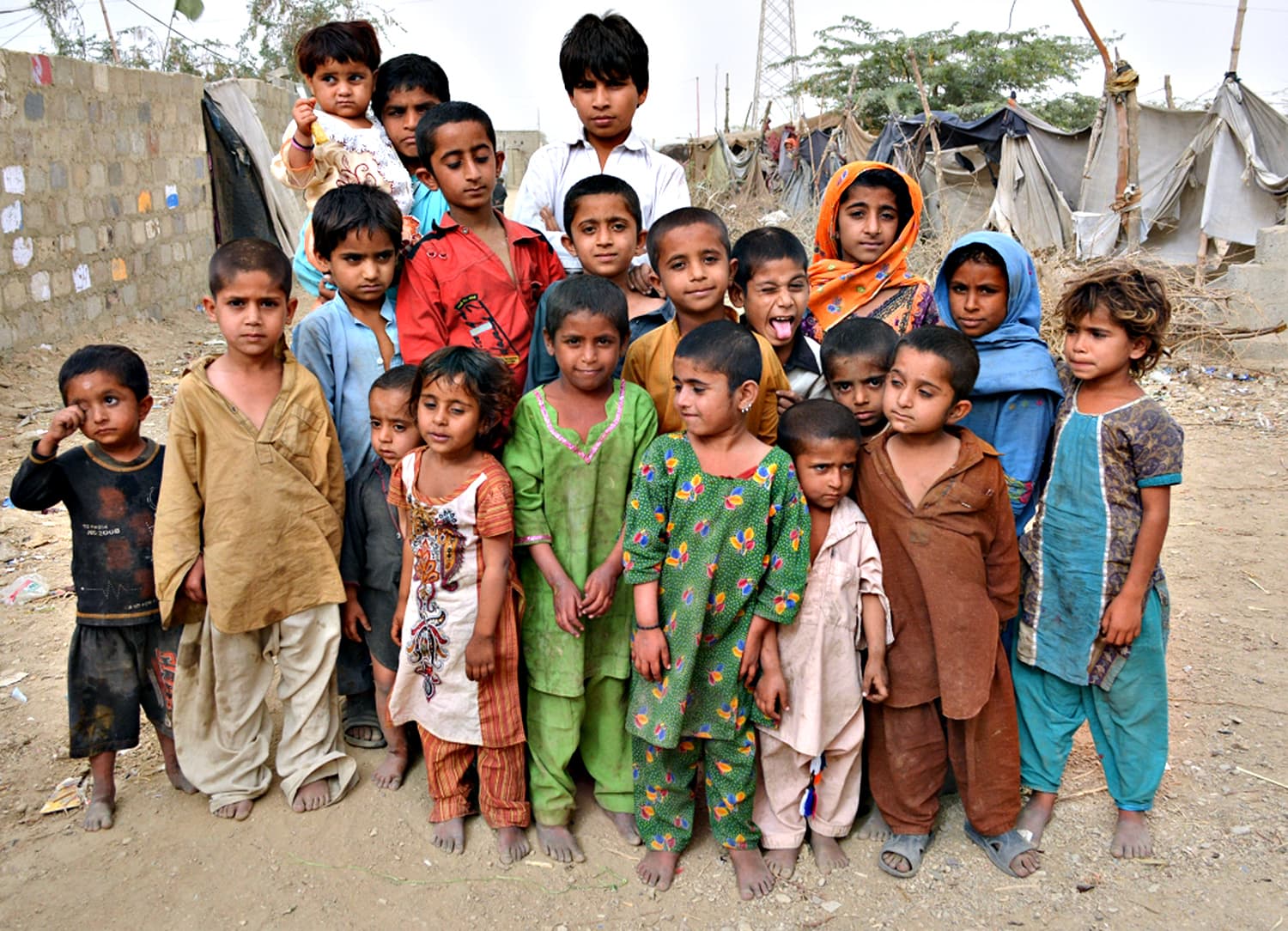Still marooned after 2010 floods in Pakistan
Five years after Pakistan’s worst floods, thousands of displaced people continue to live makeshift lives in a slum on the outskirts of Karachi with the government doing little to help them.
It has been five years since the devastating floods of 2010 that drove Rubina Hisbani out of her village, five years of living like a refugee in a makeshift hut near Pakistan’s commercial capital Karachi.
But, Rubina is no closer to going back home. She lives every day without sanitation, drinking water and electricity, trapped in a permanent state of uncertainty and homelessness.
The 24-year-old mother is not the only one whose life was completely destroyed by the worst floods in Pakistan’s recorded history. About 1,000 families live in the vast scattered slum of Sindhabad, which runs parallel to the Super Highway, a critical artery and one of the country’s busiest roads that connects Karachi to the rest of the country.
 |
| Rubina Hisbani with her two month old son Hakim Ali, outside her makeshift hut in the Sindhabad slum. |
 |
 |
 |
The families — who lost everything, including their crops, houses, livestock and even their agricultural land — have been forgotten by the government whose promises of rehabilitation have yielded nothing.
Most people are from the agricultural regions of the Sindh province, the region worst affected by the floods. They came in August 2010 when the monsoon-swollen Indus breached its banks and submerged vast swathes of land, affecting up to one-fifth of the country.
 |
Unprecedented monsoon rains had led to the waters of the Indus, the country’s lifeline, flowing over and causing massive devastation. The floods, considered by many to be a manifestation of climate change, killed almost 2,000 people. The floods affected 20.2 million people while damaging 2.4 million hectares of agricultural land and 2.1 million houses.
Though all four Pakistan provinces were affected, Sindh was the worst hit as the floodwaters from all three provinces passed through Sindh to reach the Arabian Sea in the south.
Rubina, who belongs to a small village in Sindh’s Jacobabad district, about over 500 kilometres from Karachi, remembers only too well the day the waters came rushing in, washing away homes and livelihoods.
“The floodwater was like a sea and was flowing everywhere. There was no dry place anywhere,” she recalls. “The roads were full of people and people were pouring into government buildings. There was no place to stay.”
 |
| Forty year old Roshan Khatoon carries fuel wood back from the hills to Sindhabad slum to cook for her family. |
 |
 |
| A group of children pose for the camera in Karachi’s Sindhabad slum. |
 |
The waters ravaged transport and communication networks, water and irrigation channels, power and energy plants and grids. And thousands of people, who had lost everything, started walking towards the south because they had no money to pay for transport.
Some, like Rubina and Roshan Khatoon, managed to reach Karachi after travelling hundreds of kilometres from their villages in Jacobabad.
“When we came here, we lived for three nights on the road under the open sky. There was no place to go,” Roshan Khatoon said.
With no other options, they started constructing huts beside the national Super Highway. And thus the Sindhabad slum emerged. “Initially, government authorities and several NGOs came forward to help. But with the passage of time, everyone left us,” she said, sitting in her small makeshift kitchen.
Like Roshan, Rubina and her extended family live in two makeshift huts made out of gunny bags and fenced with thorn bushes.
They were lucky to have survived the deluge but live in abysmal conditions. The slum lacks basic facilities such as proper sanitation, drinking water, natural gas or electricity connections, a school and basic healthcare facilities.
Women have a particularly difficult time. They have to walk for miles and cross the country’s busiest road to fetch water from a hydrant. Many women have been injured while crossing the road.
 |
 |
 |
| Teenager Radha was injured while crossing the road to fetch water. Women have to walk miles through the outskirts of Karachi to fetch drinking water for their families. |
 |
With no gas connection, they have to trudge to the hills nearby to find wood or dry cow dung for cooking. There are no toilets and most women have to wait for darkness to descend before they go out in the open outside the slum to answer the call of nature. There are no schools, so children wander around aimlessly and play – but without any toys.
Health problems abound with infants the most vulnerable to diseases like pneumonia as there is no place to keep them warm.
The men, most of whom were farm workers and are slowly giving hope that they can ever return to their ancestral lands, have had to find alternate jobs. Ghulam Nabi Shar, a traditional farmer from village Sarang Shar in northern Sindh’s Shikarpur district, is now working as mason. Government response.
In the face of all this misery, the government’s inaction has been glaring. The authorities have made no effort to either help the flood victims go back or improve the living conditions of the slum. Ali Hassan Hingorjo, the provincial minister for rehabilitation, a special ministry set up by the Sindh government following the floods, admits he has no knowledge on the issue.
“I really have no idea about this issue, as I have recently joined the ministry, but now I will look into the matter and obviously our government will help the flood victims,” Hingorjo told thethirdpole.net over the telephone.
This article was first published in thethirdpole.net


